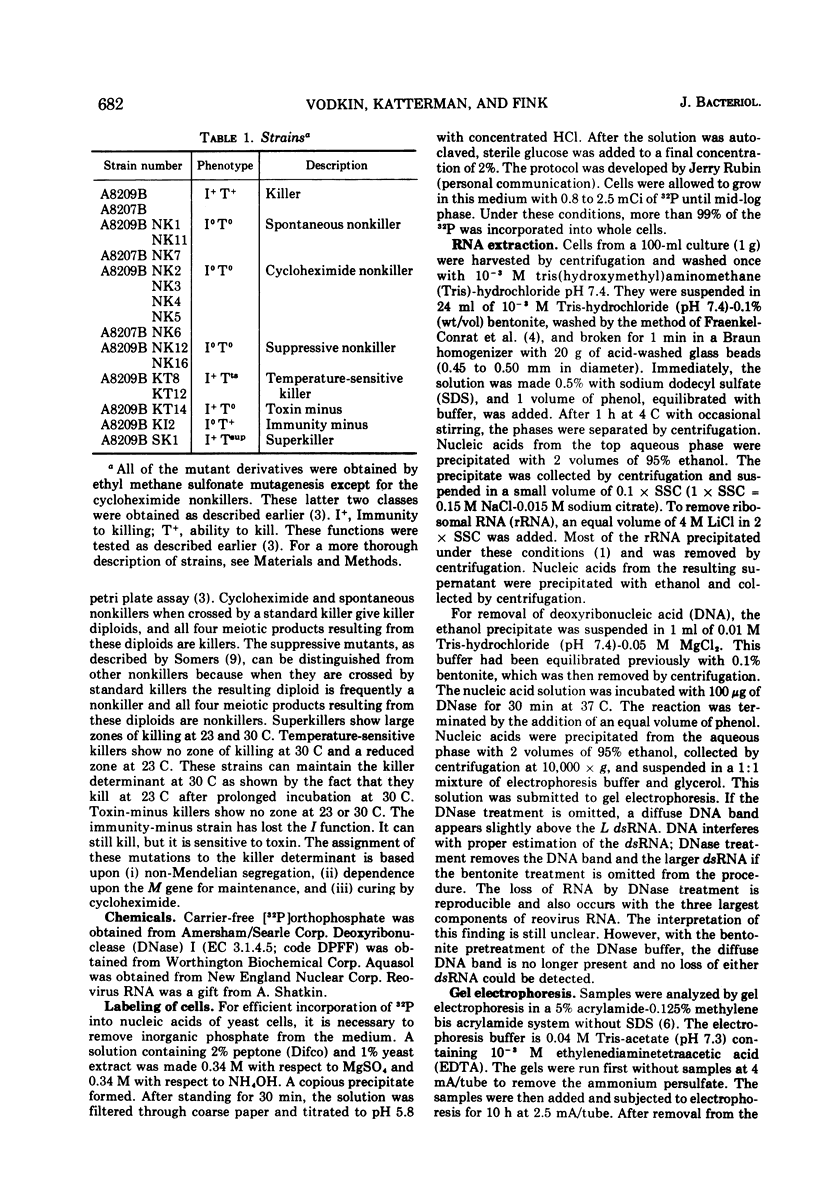Abstract
Killer strains of Saccharomyces cerevisiae contain two species of double-stranded ribonucleic acid (dsRNA) with molecular weights estimated at 2.5 × 106 (L) and 1.4 × 106 (M). The M component appears to have a high adenine content. All mutants of killer which are defective for both the toxin and immunity functions lack the M dsRNA. One of these mutants has a novel dsRNA with a molecular weight of 5 × 105. Another class of killer mutants contains strains which are defective for either the toxin or the immunity function. They include temperature-sensitive killers, superkillers, and immunity-minus strains. The dsRNA profile of temperature-sensitive killers resembles that of the standard killer. The superkiller has 2.5 times more of the M dsRNA (1.4 × 106 daltons) than does the standard killer. Immunity-minus killers have, in addition to the two dsRNAs species of standard killer, a novel dsRNA with a molecular weight of 2.5 × 105. The data are consistent with the hypothesis that the M RNA controls toxin production. In addition, the two RNAs, L and M, seem to be regulated together. When the M RNA is missing, the amount of L is either greatly elevated or greatly reduced.
Full text
PDF





Images in this article
Selected References
These references are in PubMed. This may not be the complete list of references from this article.
- Avital S., Elson D. A convenient procedure for preparing transfer ribonucleic acid from Escherichia coli. Biochim Biophys Acta. 1969 Apr 22;179(2):297–307. doi: 10.1016/0005-2787(69)90038-0. [DOI] [PubMed] [Google Scholar]
- Bevan E. A., Herring A. J., Mitchell D. J. Preliminary characterization of two species of dsRNA in yeast and their relationship to the "killer" character. Nature. 1973 Sep 14;245(5420):81–86. doi: 10.1038/245081b0. [DOI] [PubMed] [Google Scholar]
- FRAENKEL-CONRAT H., SINGER B., TSUGITA A. Purification of viral RNA by means of bentonite. Virology. 1961 May;14:54–58. doi: 10.1016/0042-6822(61)90131-3. [DOI] [PubMed] [Google Scholar]
- Fink G. R., Styles C. A. Curing of a killer factor in Saccharomyces cerevisiae. Proc Natl Acad Sci U S A. 1972 Oct;69(10):2846–2849. doi: 10.1073/pnas.69.10.2846. [DOI] [PMC free article] [PubMed] [Google Scholar]
- Shatkin A. J., Sipe J. D., Loh P. Separation of ten reovirus genome segments by polyacrylamide gel electrophoresis. J Virol. 1968 Oct;2(10):986–991. doi: 10.1128/jvi.2.10.986-991.1968. [DOI] [PMC free article] [PubMed] [Google Scholar]
- Siegel A., Huber R. Complementary regions to tobacco mosaic virus RNA in host DNA. Biochem Biophys Res Commun. 1970 Jul 27;40(2):350–355. doi: 10.1016/0006-291x(70)91016-8. [DOI] [PubMed] [Google Scholar]
- Somers J. M., Bevan E. A. The inheritance of the killer character in yeast. Genet Res. 1969 Feb;13(1):71–83. doi: 10.1017/s0016672300002743. [DOI] [PubMed] [Google Scholar]
- Somers J. M. Isolation of Suppressive Sensitive Mutants from Killer and Neutral Strains of SACCHAROMYCES CEREVISIAE. Genetics. 1973 Aug;74(4):571–579. doi: 10.1093/genetics/74.4.571. [DOI] [PMC free article] [PubMed] [Google Scholar]
- Vodkin M. H., Fink G. R. A nucleic acid associated with a killer strain of yeast. Proc Natl Acad Sci U S A. 1973 Apr;70(4):1069–1072. doi: 10.1073/pnas.70.4.1069. [DOI] [PMC free article] [PubMed] [Google Scholar]



